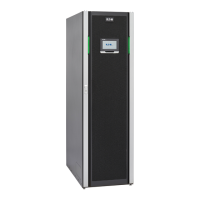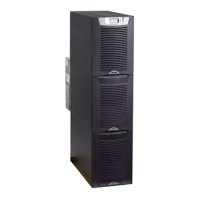Eaton® 9390 (100–160 kVA) UPS Installation and Operation Manual 164201604—Rev F 36
CChhaapptteerr 77 UUnnddeerrssttaannddiinngg UUPPSS OOppeerraattiioonn
The Eaton 9390 UPS is a continuous-duty, solid–state, transformerless (at 208, 400, and 480 Vac), three-phase,
true online system that provides conditioned and uninterruptible AC power to the UPS system's output. The
UPS supports process control, data processing, telecommunications/PBX, research, and non-patient medical
equipment. The Eaton 9390 UPS maintains power to the critical loads during commercial electrical power
brownout, blackout, overvoltage, undervoltage, and out–of–tolerance frequency conditions.
The basic system consists of a rectifier, battery converter, inverter, monitoring/ operation control panel,
integrated communication server, and digital signal processor (DSP) logic.
In this manual, the power required by your equipment is called the critical load. The UPS supplies the critical
load with conditioned power that is synchronized with your utility power. Figure 9 shows the main elements of
the UPS system.
FFiigguurree 99.. MMaaiinn EElleemmeennttss ooff tthhee UUPPSS SSyysstteemm
Output
Contactor
K3
Battery
Battery
Breaker
Battery
Converter
Input
Contactor
K1
AC Input to
Rectifier/
Charger
AC Input to
Bypass
Backfeed
Protection
Contactor
K5
Power Module
InverterRectifier
Digital
Metering
Static
Switch
AC Output
to Critical
Load
UPS Cabinet
Ignore the dotted
lines for the
9390IT internal
battery
configuration.
External Battery Cabinet or
Internal Battery Compartment
If utility power is interrupted or falls outside the parameters specified in Chapter 14 Product Specifications, the
UPS uses a backup battery supply to maintain power to the critical load for a specified period of time or until the
utility power returns. For extended power outages, the UPS allows you to either transfer to an alternative
power system (such as a generator) or shut down your critical load in an orderly manner.

